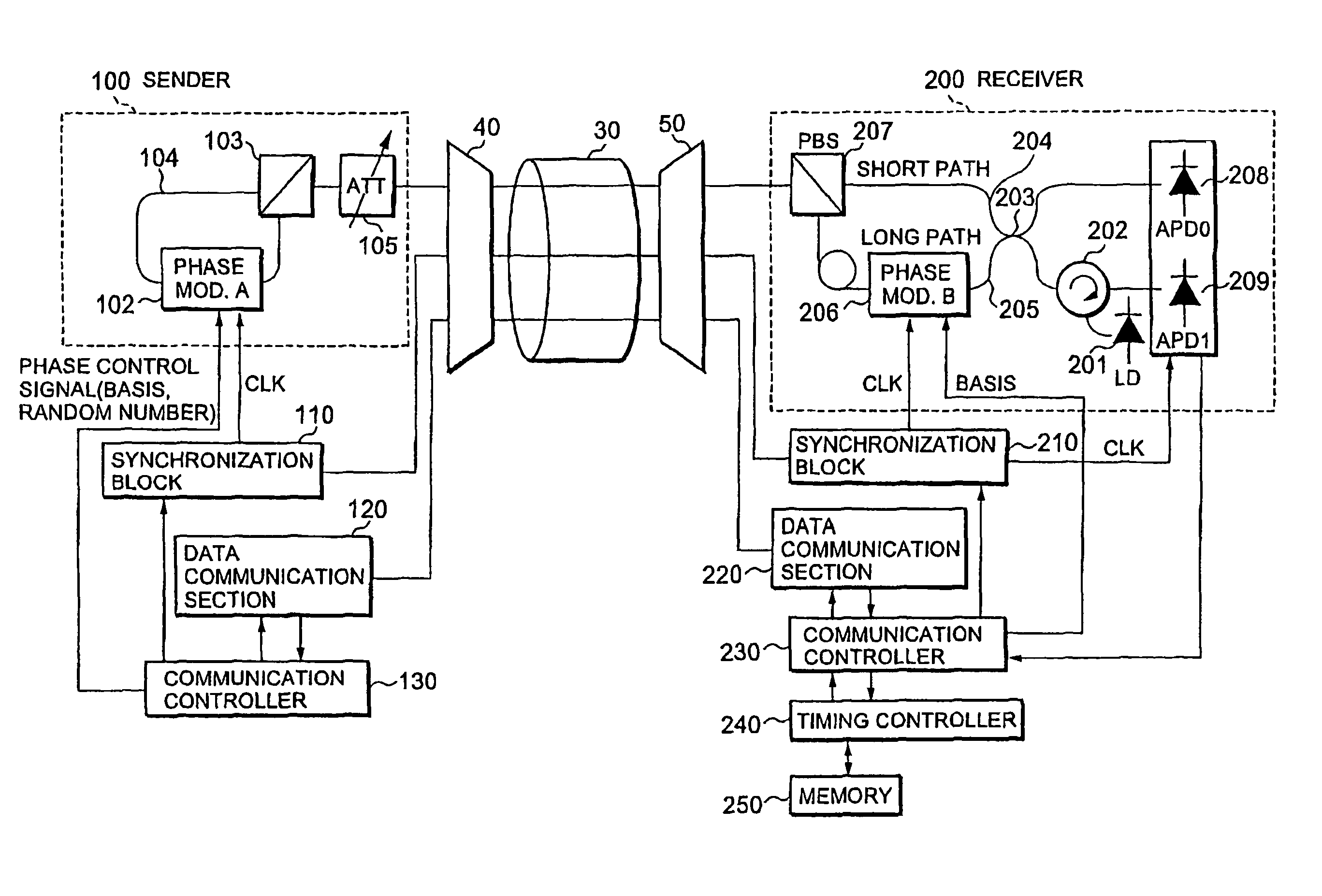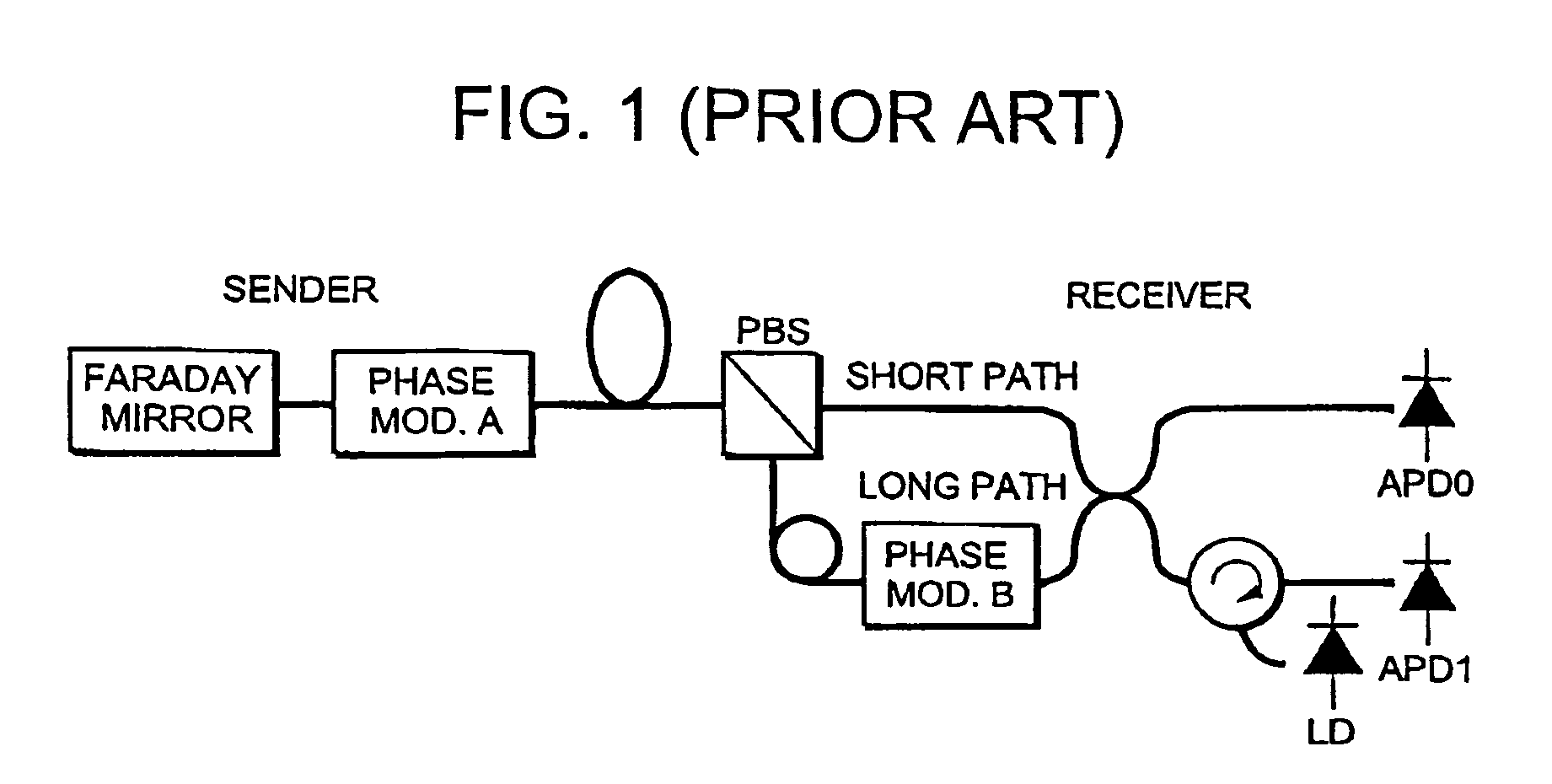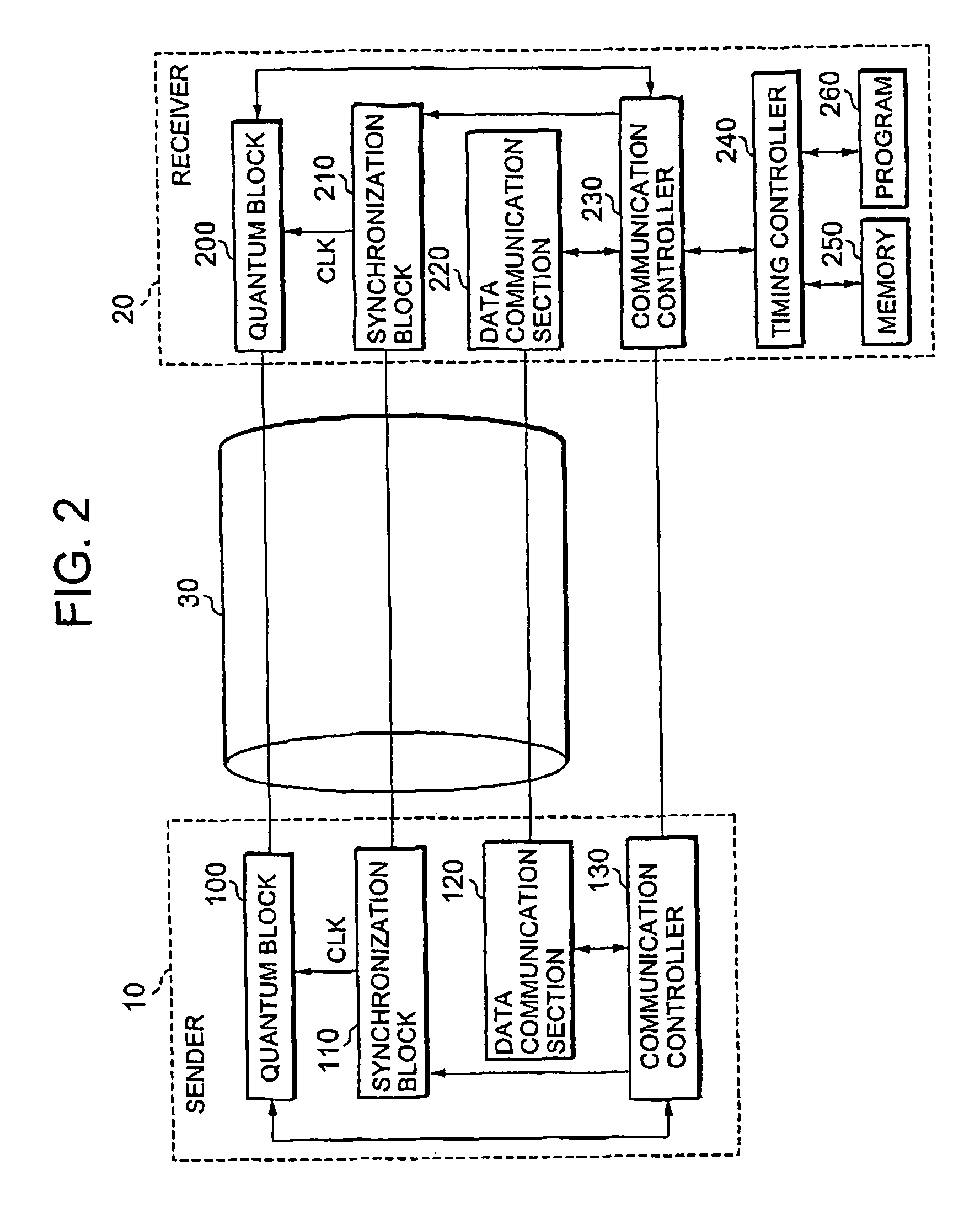Communication system and timing control method
a communication system and timing control technology, applied in the field of communication systems, can solve the problems of inability to retime photons, inability to optimize their own modulation timing, and loss of most data transmitted from senders, so as to facilitate the optimization of its own modulation timing, stable phase modulation and photon detection, and fast stable distribution of cryptographic keys
- Summary
- Abstract
- Description
- Claims
- Application Information
AI Technical Summary
Benefits of technology
Problems solved by technology
Method used
Image
Examples
first embodiment
1. First Embodiment
[0067]FIG. 3 is a block diagram showing a configuration of a temperature-independent plug and play system according to a first embodiment of the present invention. Note that blocks similar to those shown in FIG. 2 are given the same reference numerals and symbols as in FIG. 2. The basic configuration and operation of the plug and play system according to the present embodiment are as described in conjunction with FIG. 1, except that a PBS loop is employed in place of the faraday mirror in the sender.
[0068]The quantum block 100 in the sender 10 (here, Alice) has a PBS loop 104 and a variable optical attenuator 105. The PBS loop 104 includes a phase modulator 102 and a polarization beam splitter (PBS) 103.
[0069]The phase modulator 102 performs phase modulation on a sequence of optical pulses passing through itself, in accordance with a clock signal CLK supplied from the synchronization block 110. The depth of a phase modulation is determined by a phase control signa...
second embodiment
2. Second Embodiment
[0152]FIG. 16 is a block diagram showing a configuration of a quantum key distribution system according to a second embodiment of the present invention. As in the first embodiment, the quantum key distribution system according to the present embodiment employs a plug and play configuration. However, the present embodiment is different from the first embodiment in that a faraday mirror, not the PBS loop, is used in the quantum block 100 of the sender 10. Note that blocks having functions similar to those shown in FIG. 3 are given the same reference numerals and symbols as in FIG. 3, and detailed description thereof will be omitted.
[0153]The quantum block 100 in sender 10 includes a faraday mirror 101, phase modulator 102 and variable optical attenuator 105, which are connected in series. Double pulses coming from the transmission line 30 are reflected by the faraday mirror 101 with their polarization rotated by π / 2 each, and then the subsequent pulse only is modul...
fifth embodiment
4. Fifth Embodiment
[0219]4.1) Time-Direction Control of Timing Signal
[0220]FIG. 21 is a handshake diagram showing a procedure of the control of the sender's timing according to a fifth embodiment of the present invention, and FIG. 22 is a flowchart showing the procedure of the control of the sender's timing according to the fifth embodiment of the present invention. Control of the sender is all performed under instructions from the receiver. Since the phase modulator 102 in the sender is driven in accordance with a clock supplied from the synchronization block 110, the timing of driving the phase modulator 102 depends on the timing of supplying the clock (clock timing). The synchronization block 110 can shift the clock timing by an arbitrary number of steps ranging from 0 to 2π, under instructions from the communication controller 270 in the receiver.
[0221]First, the communication controller 270 in the receiver designates data “00” and notifies it to the sender (S801) and, through t...
PUM
 Login to View More
Login to View More Abstract
Description
Claims
Application Information
 Login to View More
Login to View More - R&D
- Intellectual Property
- Life Sciences
- Materials
- Tech Scout
- Unparalleled Data Quality
- Higher Quality Content
- 60% Fewer Hallucinations
Browse by: Latest US Patents, China's latest patents, Technical Efficacy Thesaurus, Application Domain, Technology Topic, Popular Technical Reports.
© 2025 PatSnap. All rights reserved.Legal|Privacy policy|Modern Slavery Act Transparency Statement|Sitemap|About US| Contact US: help@patsnap.com



